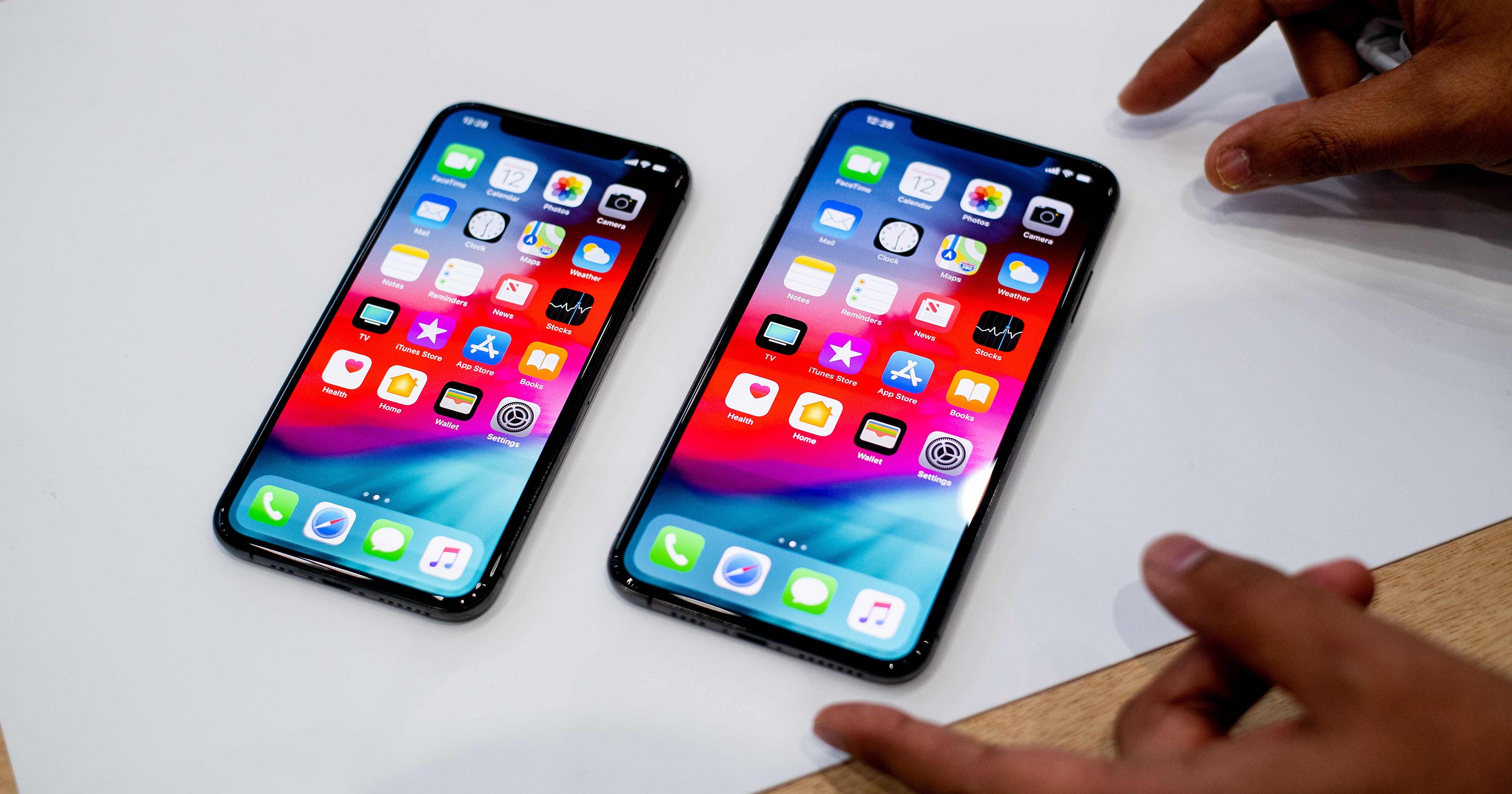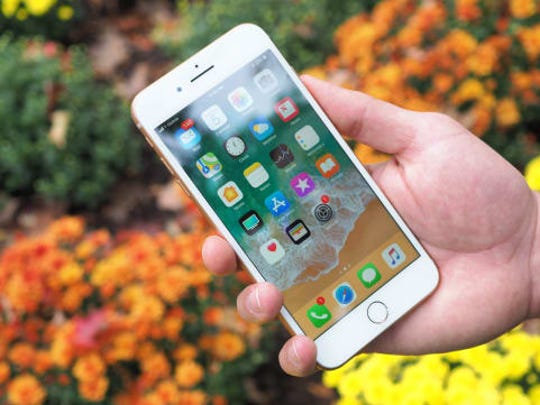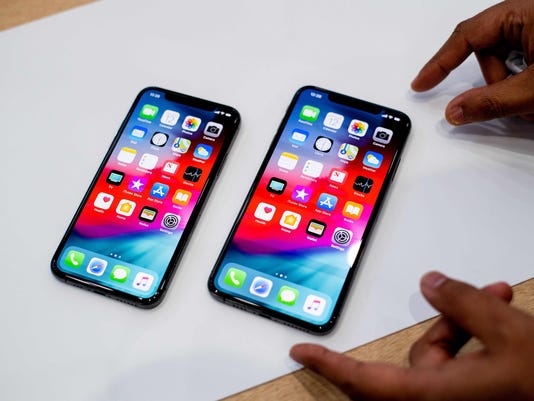
[ad_1]
It may be the “cheapest” of the new iPhones, but how exactly does the iPhone XR compare to its more expensive siblings, the XS and the XS Max.
USA TODAY
With the iPhone XR set to go on sale Friday, Apple’s 2018 iPhone lineup is seemingly complete for the holidays. Now comes the fun – or hard – part if you’re in need of a new iPhone: picking out which one you should buy.
Apple’s current list of phones ranges from the $449 32GB iPhone 7 to $1,449 for the 512GB iPhone XS Max, offering a wide range of options at a variety of prices.
Here’s a guide to help you navigate through them.
Note: This guide focuses on new iPhones and isn’t factoring trade-ins that could bring the prices down depending on your store or carrier. We also aren’t talking about Android devices, though there are plenty of great options for that platform, too.
Like a home button? Get an iPhone 8

iPhone 8 Plus (Photo: Reviewed / Michael Desjardin)
If you like a home button your choices are simple: an iPhone 7 or 7 Plus or an iPhone 8 or 8 Plus.
At $599, the iPhone 8 costs $150 more than the iPhone 7 (and the $699 8 Plus is $130 more than the 7 Plus). As far as features and design, the differences between the two lines are fairly minor. The screens are the same sizes and resolutions, the camera improvements on the 8 line aren’t terribly significant, and all devices are water resistant and lack a traditional 3.5mm headphone jack.
More: What it will cost to repair screen on new iPhone models XR, XS and XS Max
More: Looking for a new iPad, Mac or AirPods? You really should wait until the end of the month
So why spend the extra money? Two reasons: the faster processor and the improved storage capacities.
Today, people are holding onto their phones for longer than the traditional two-year upgrade cycle of the past decade. With these purchases now stretching further, it makes sense to get a device that is better equipped. Whereas Android devices let you augment storage with memory cards, you can’t do that with iPhones (though iCloud and Google Photos are good options for backing things up to the cloud). You also can’t upgrade the processor.
This makes the price difference, which gets you 64GB of storage on a base 8 or 8 Plus as well as Apple’s A11 processor, all the more worthwhile in the long run.
Want a “new” iPhone? Look at the XR
Apple’s latest iPhones are a far departure in design from the home button days of the original.
Successors to last year’s iPhone X, all three of Apple’s latest iPhone’s – the XS, XS Max and newly released XR – all drop the home button for larger edge-to-edge displays, have much-improved cameras and run faster processors.
For many, the $749 iPhone XR will be the right iPhone to buy. Its LCD display (Apple calls it “Liquid Retina”) isn’t as sharp as the fancier OLED displays on the XS and XS Max, and it lacks the second telephoto camera on the back for improved portrait photos.

Apple’s iPhone XR in blue (Photo: Apple)
But that’s not to say the XR is a bad phone. The biggest of the differences, the display, is actually pretty good. So good, in fact, that USA TODAY’s Ed Baig in his review noted that “many of you would only notice the display discrepancies if you laid an XS or XS Max next to an XR, side by side, if even at that.”
More: iPhone XR review: Why you should consider the budget model over the pricier XS
At 6.1 inches, the display is right in between the XS’s 5.8-inch screen and the 6.5-inch display of the XS Max. Size-wise, it’s slightly larger than a regular iPhone 6-7-8 and slightly smaller than one of the Plus varieties.
It has the same processor, similar storage capacities and packs many of the features the XS models have including water resistance and wireless charging (though the XS is a bit stronger on the water-resistance side). Because of its lower-resolution display compared to the OLED models, Apple also says the XR will actually have better battery life.

The new Apple iPhone XR is on display at the Steve Jobs Theater after an event to announce new products Wednesday, Sept. 12, 2018, in Cupertino, Calif. (Photo: Marcio Jose Sanchez, AP)
Over the course of a 24-month payment plan, the difference between the XR and XS is over $10 per month. For what for many might not be a major difference in screen and camera, you will likely be better off saving your money and going with the XR.
Want a big-screen phone? Get the XS Max
It makes the most sense to buy the XS if you want the largest display you can get on an iPhone. At 6.5 inches, the XS Max packs one of the largest screens available on a phone in the U.S. today.
Most impressive with the XS Max, however, is that the massive display is actually quite compact. While the screen is an inch larger than the 8 Plus, the phones are roughly the same size because of the removal of the home button and top bezel.
More: iPhone XS and XS Max review: Apple’s beautiful big-screen beasts exact a small ransom
More: Apple will raise iPhone battery replacement prices on January 1
At $1,099 for the 64GB version, the XS Max isn’t cheap. But if you want all the latest Apple has to offer on the largest iPhone screen yet, you’ll be very happy with the XS Max.
What to avoid: Buying a new iPhone 7 or 7 Plus and the iPhone X
As mentioned above, the iPhone 7 and 7 Plus are bad options both for the smaller storage offered and their weaker processors. Assuming you hold on to your phone for more than two years, you’ll really appreciate this then.
When Apple’s new iPhones were announced in September, plenty of people asked about trying to buy an iPhone X on a discount from a carrier.
For $899.99 for the 64GB X, buying last year’s iPhone at a $100 discount isn’t much of a savings. For the extra $100, or just over $4 per month on a 24-month payment plan, you’d get the improved XS. For $150 less, you’d sacrifice the OLED display but get a faster phone in the XR.
As for Apple’s smaller iPhone SE? While not officially sold by Apple, you can still find the phone at a number of carriers and prepaid providers. If you want a smaller iPhone or need a replacement iPhone for cheap, the SE isn’t a bad choice particularly if you find it for less than $200.
Just remember that the phone you are getting doesn’t just have a 4-inch display, but runs a now roughly 3-year-old processor and specs. Plus, a successor has been heavily rumored to be around the corner, possibly in 2019.
Follow Eli Blumenthal on Twitter @eliblumenthal
Read or Share this story: https://www.usatoday.com/story/tech/2018/10/25/iphone-buyers-guide-2018-what-buy-what-not-buy/1750995002/
Source link
